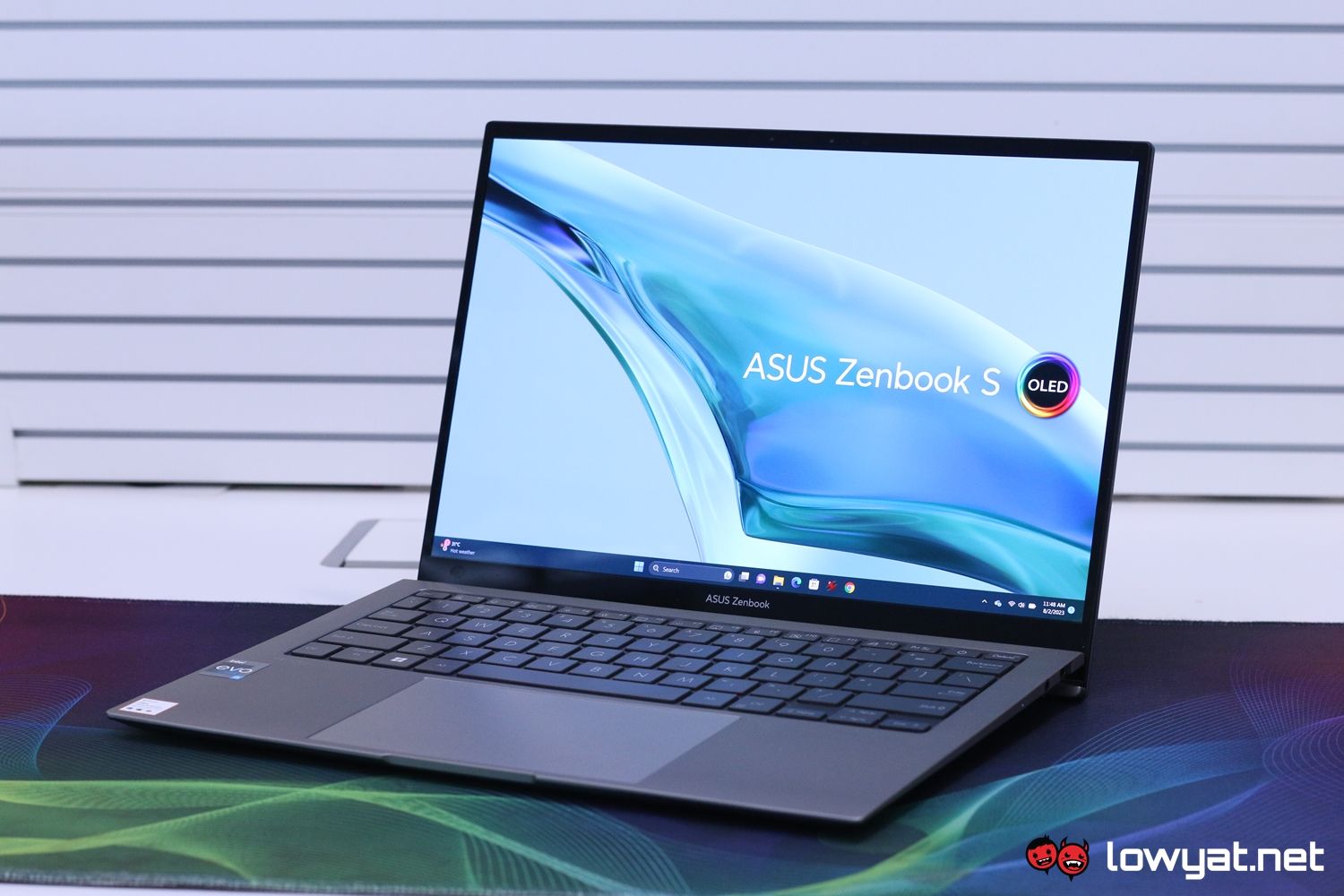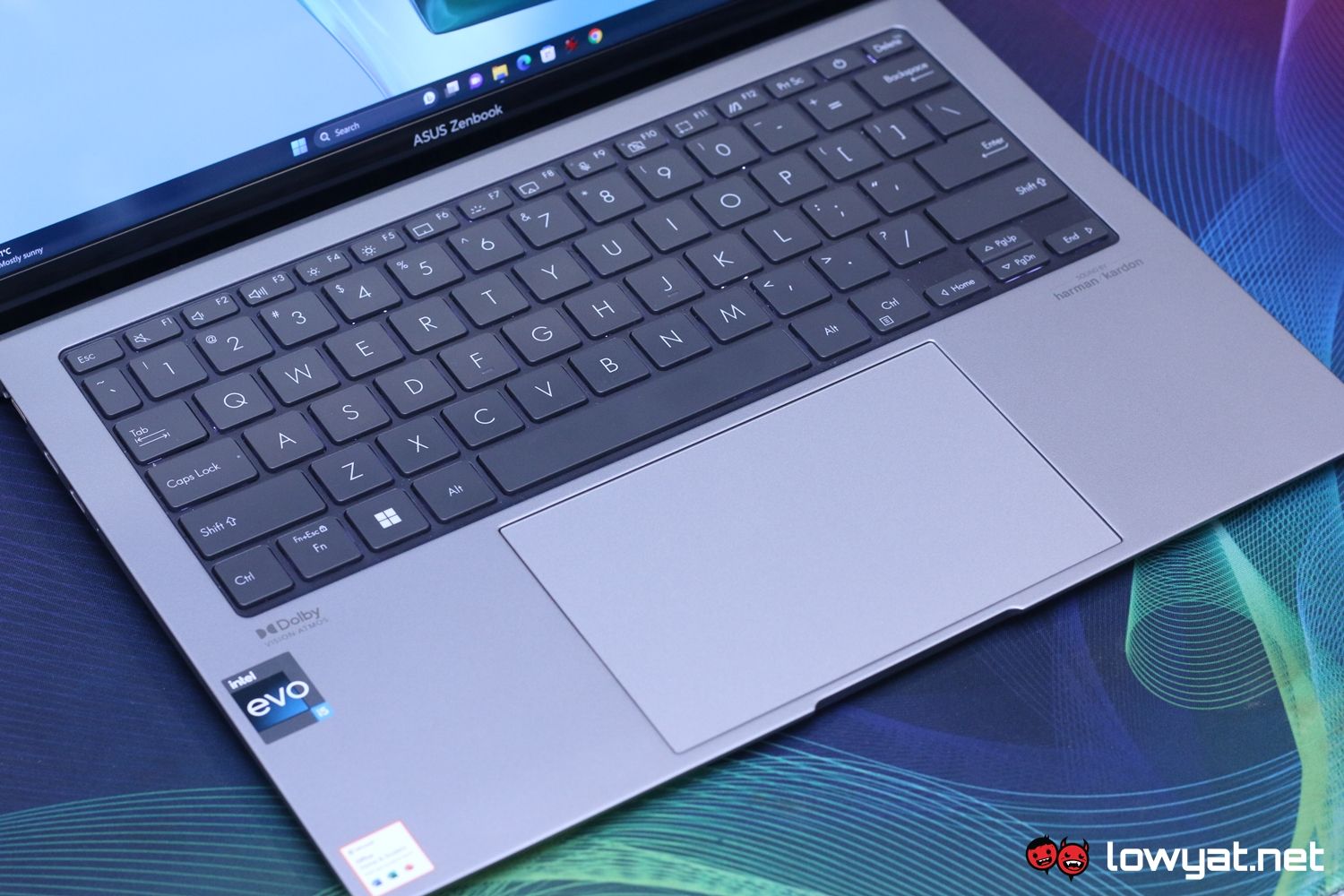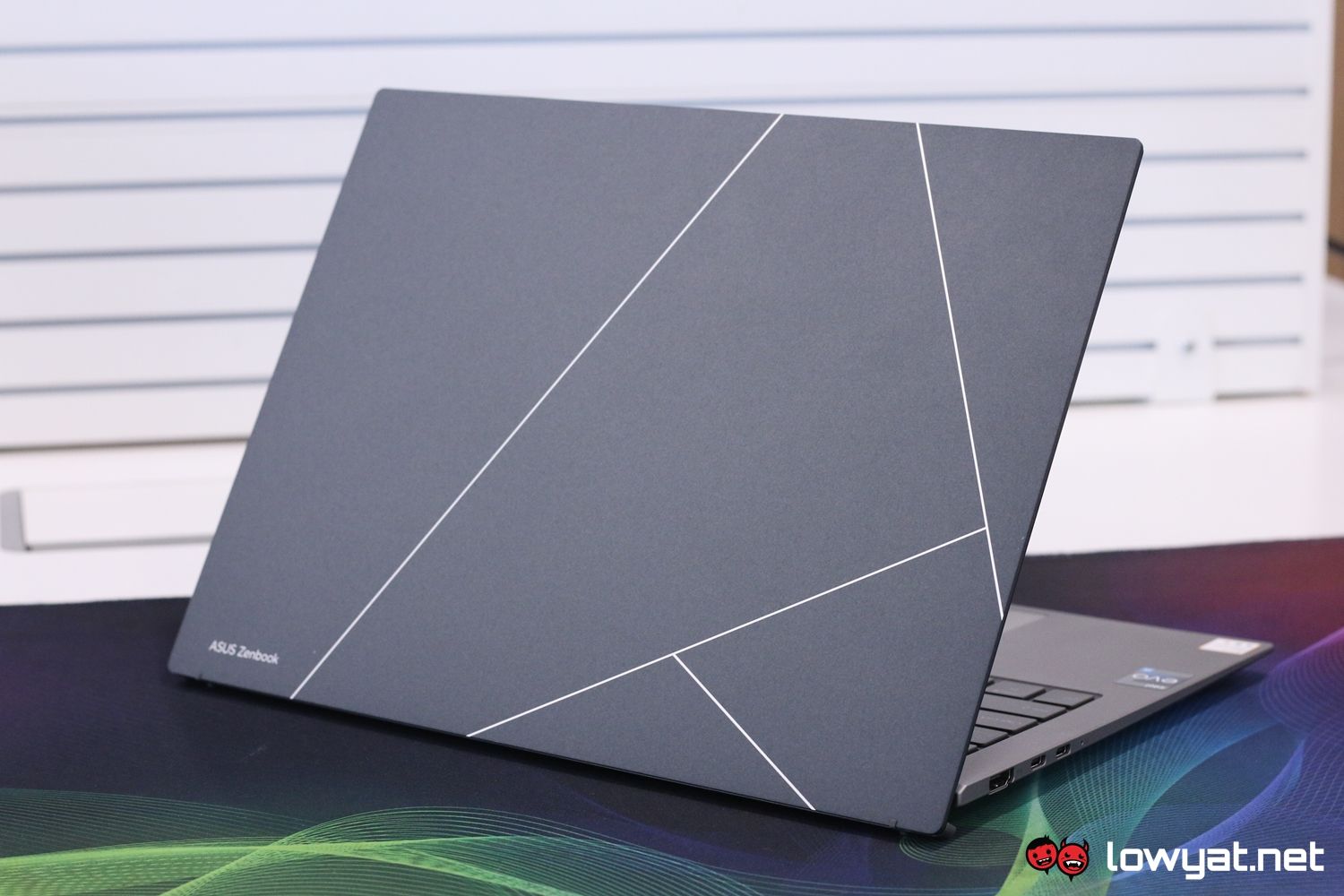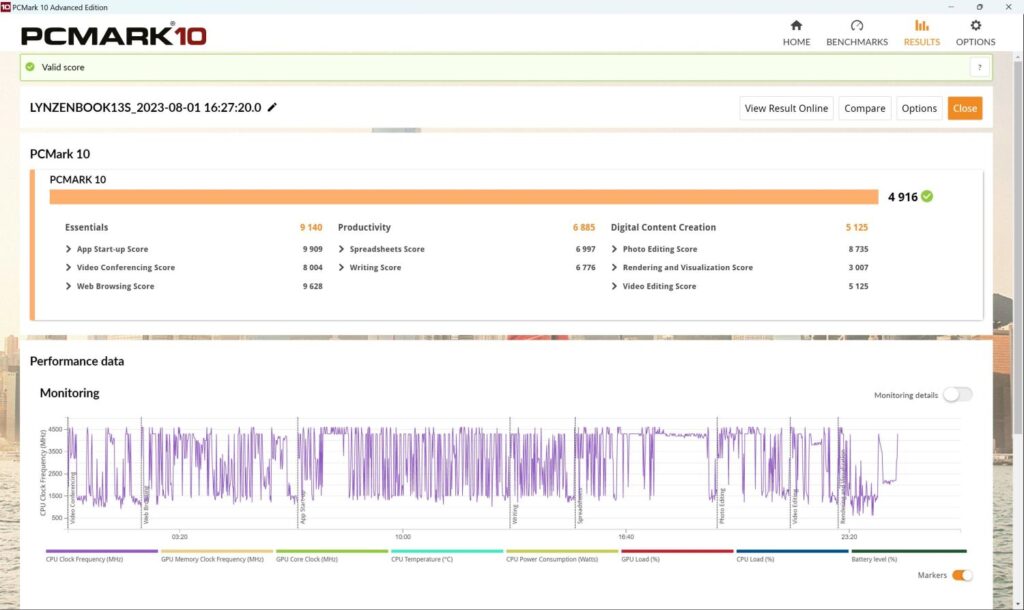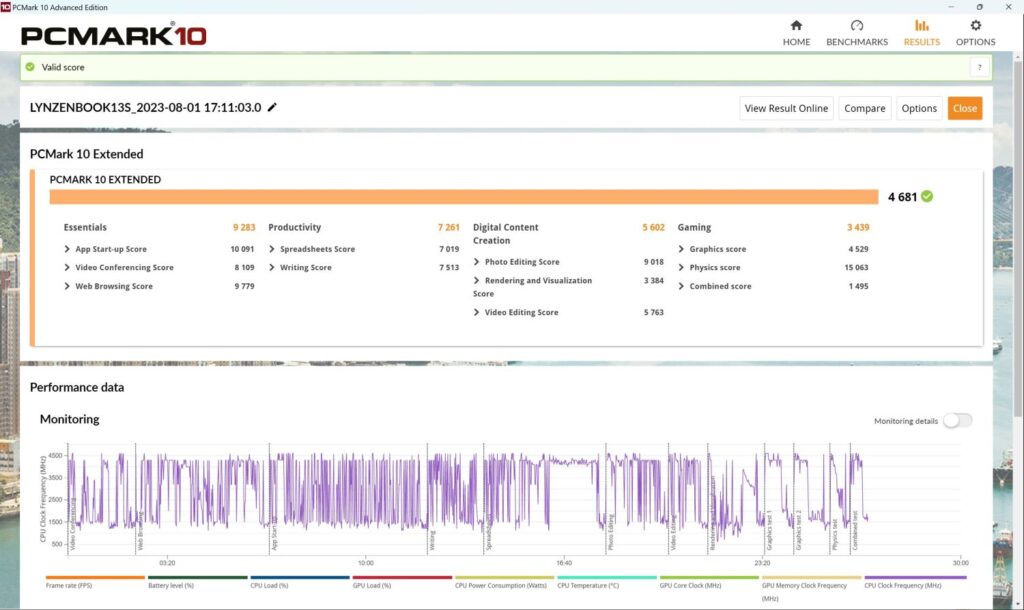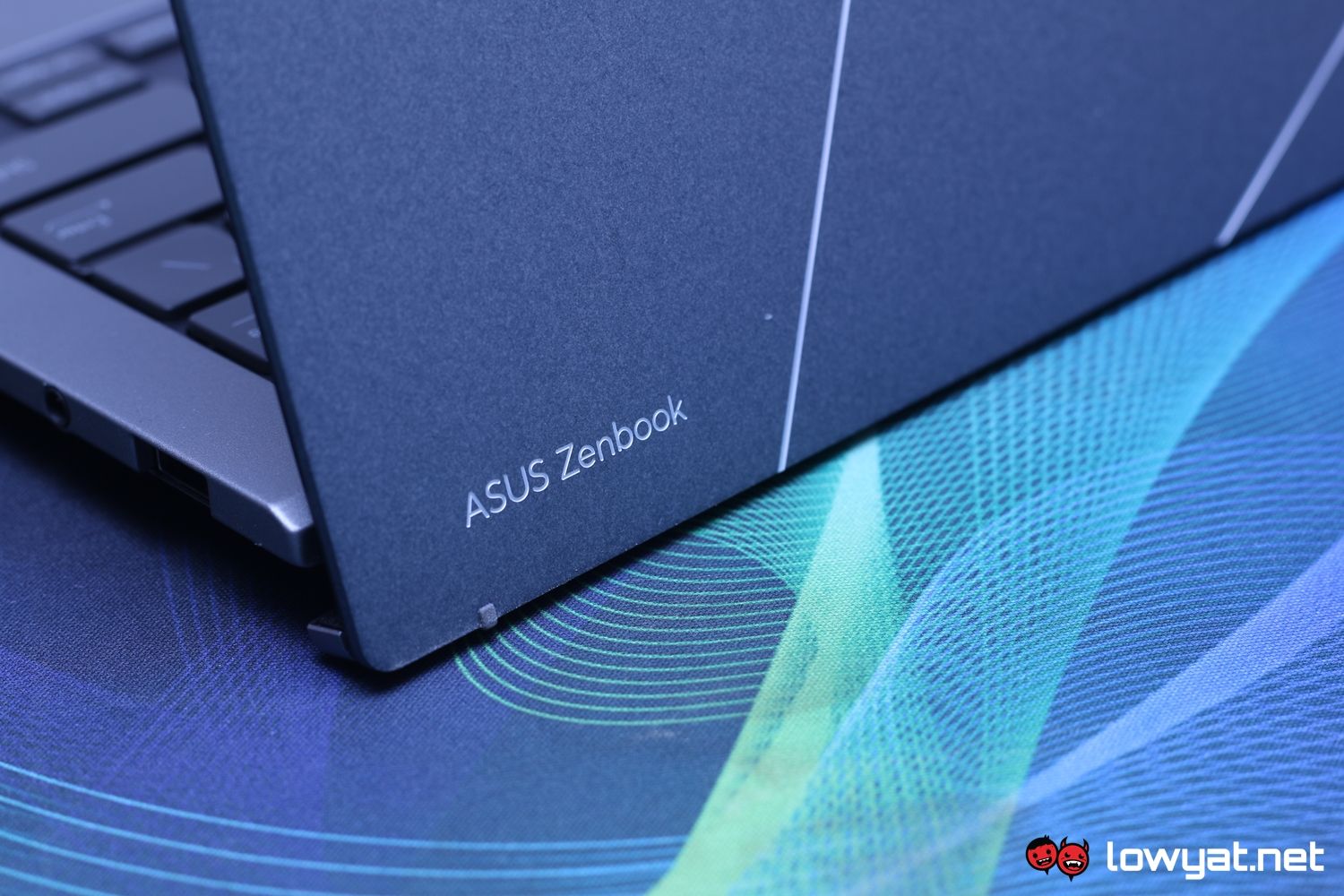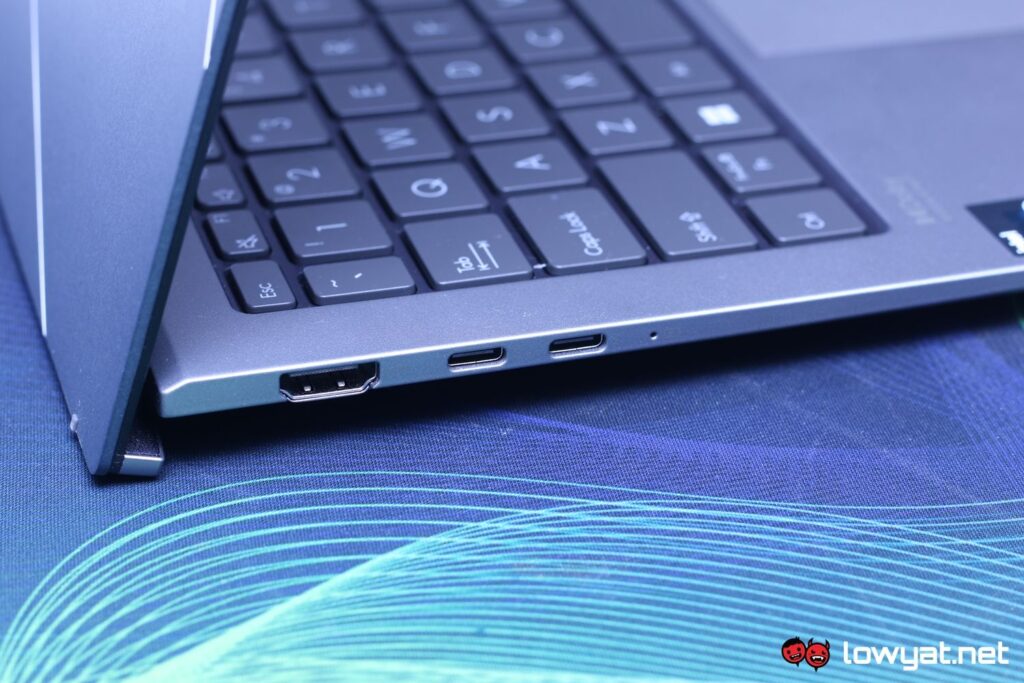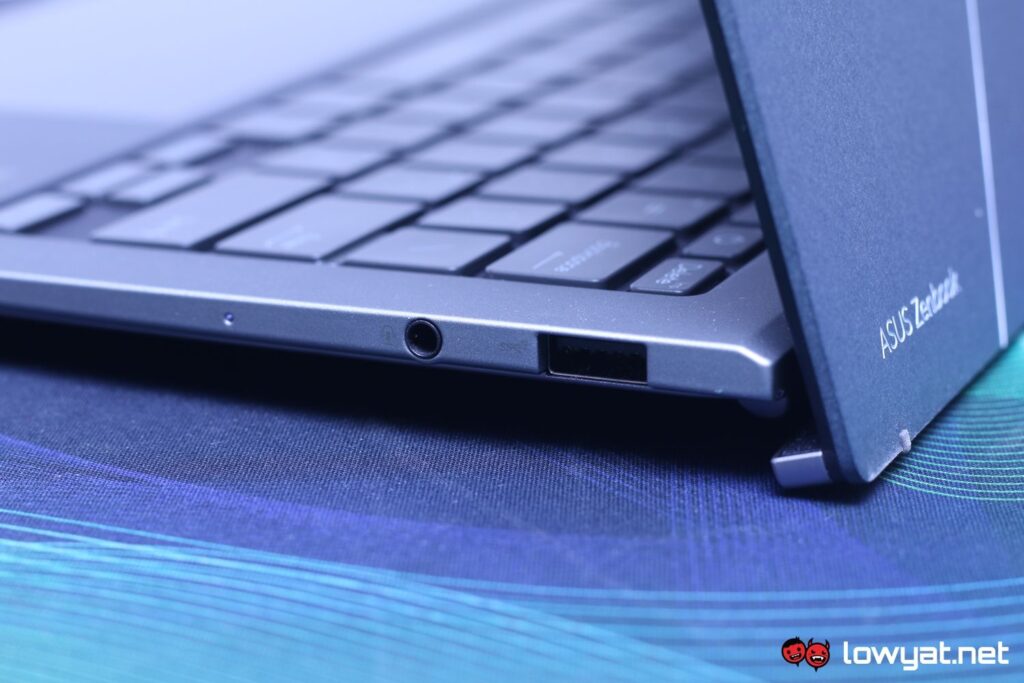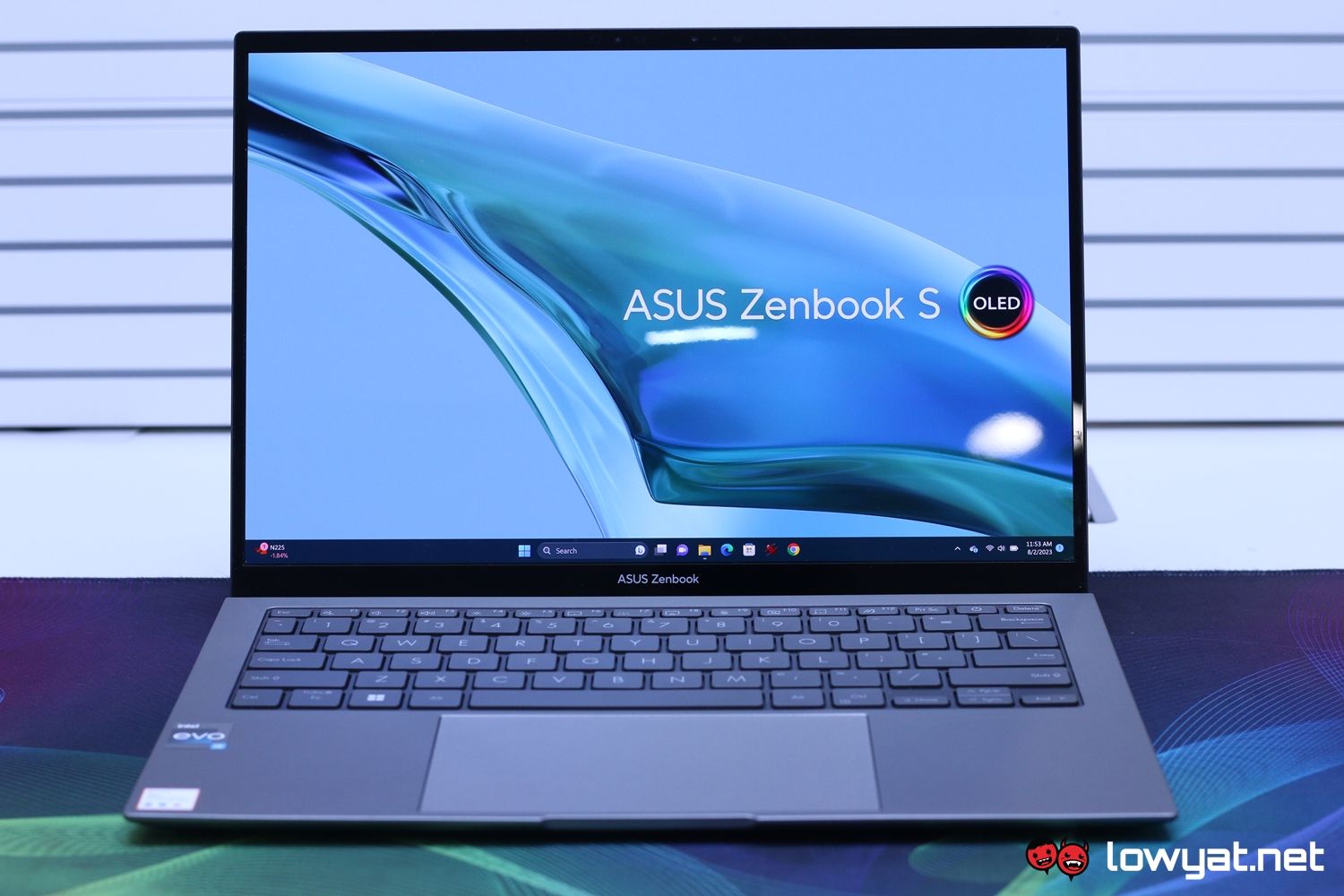Since it first launch, ASUS’ Zenbook S 13 OLED lineup has often been considered one of the more prominent thin and light alternatives to the Apple MacBook Air, to which there are a handful of them. With this year’s iteration of the S13, The Taiwanese brand not only made it thinner but also lighter than its predecessor, as well as tarted it up a bit with its aesthetics.
What Am I Looking At?
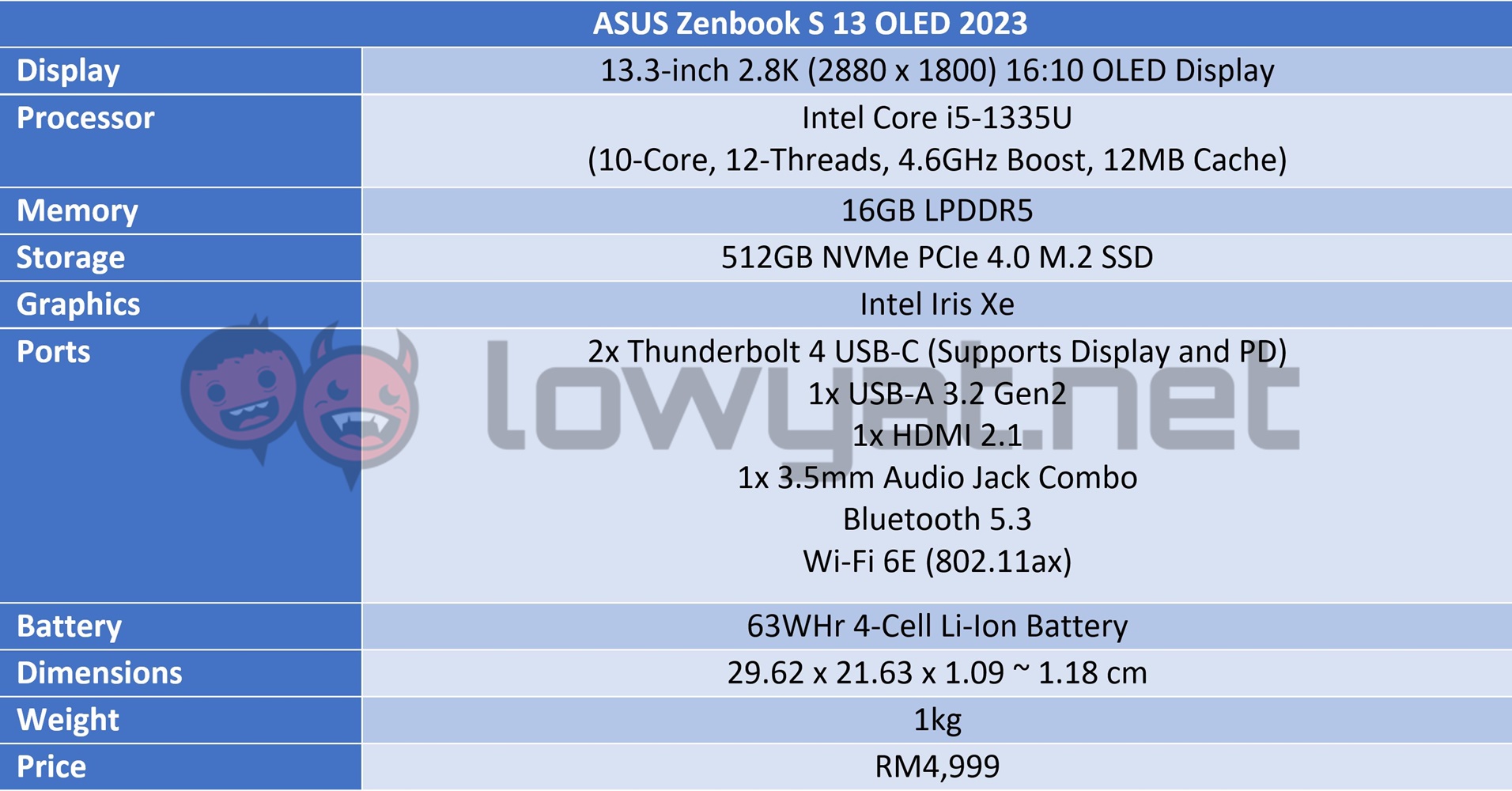 In terms of specifications and the hardware it is rocking, the latest ASUS Zenbook S 13 OLED has been updated with the latest hardware, in the form Intel’s 13th Gen chipset. Specifically, it’s powered by either an Intel EVO Core i5-1335U or Core i7-1355U. In my case, my review unit is fitted with the former CPU. Besides the CPU, it also comes with 16GB LPDDR5 across the board. As for storage capacity, the Core i5 model ships out with 512GB of PCIe Gen4, while the Core i7 model has double that capacity.
In terms of specifications and the hardware it is rocking, the latest ASUS Zenbook S 13 OLED has been updated with the latest hardware, in the form Intel’s 13th Gen chipset. Specifically, it’s powered by either an Intel EVO Core i5-1335U or Core i7-1355U. In my case, my review unit is fitted with the former CPU. Besides the CPU, it also comes with 16GB LPDDR5 across the board. As for storage capacity, the Core i5 model ships out with 512GB of PCIe Gen4, while the Core i7 model has double that capacity.
ASUS has also improved on the aesthetic appeal of the Zenbook S 13 OLED as well. Compared to its predecessor, the back of the laptop now has the massive rocket-shaped emblem of the machine milled into it. The end result is a very abstract and beautiful design that really helps it “pop” out.
Open up the S 13 OLED and you’re greeted by the 13.3-inch, 16:10 OLED panel, along with its unique 2.8K resolution, which is slightly greater than the standard 1440p resolution. On another note, the laptop weighs in at just 1kg and has a maximum thickness of just 1.18cm at the thickest part of the laptop, the base. Powering all this is a 63WHr 4-Cell Li-Ion battery. More importantly, it also features two Thunderbolt 4 USB-C ports, both of which can be used to charge the laptop or to expand out to other I/Os, a full USB-A 3.2 Gen2 port in case you want to connect a wireless mouse, and a full-sized HDMI 2.1 port, which is a really nice touch by ASUS. Allowing you the ability to easily connect to an external display, either for presentation purposes or to satiate your need for a secondary display.
What’s Good About it?
One of the aspects of the S 13 OLED that really impresses me and my back along with it, is its 1kg weight. That really makes a difference, especially if you’re someone like me who lugs a backpack that, on average, weighs close to 6kg, daily. Couple that with just how thin it is, and you actually start to appreciate its form factor overall. Honestly, there are times when I actually double check to see if the S13 OLED is inside.
And then there’s the battery life. On an average day, I can squeeze out close to nine hours. Nine hours, and that’s with a full-on, blinkers on, keep-your-head-down focus at the office, from the start of the working day to the end. That’s pretty impressive and honestly, an improvement over last year’s S 13 OLED model. As an on the go laptop, where I am simply one or two stories, watching a couple of shows on Netflix, or even just briefly responding to some emails, I have managed to stretch its battery close to the 2-day mark, before it actually needs a recharge.
As for the overall performance of the S 13 OLED, there isn’t any new ground being broken here. Boot times are snappy and take less than 10 seconds on average, while programs and browsers snap open instantly, and lag free. The 2.8K OLED display is gorgeous, providing bright, gorgeous images and videos, while colours are punchy and vivid, with a near-tangible vibrancy.
The typing experience on the S 13 OLED is, for me at least, a great experience, although I believe its shallow key travel will divide a room of keyboard aficionados. Personally, I have no issues with it and frankly, I actually gravitated towards it when it came to getting most of my work done.
What’s The Catch?
That isn’t to say that the S 13 OLED is flawless. For starters, the audio quality and speakers of the Zenbook S 13 OLED is, for lack of a better word, horrible. Even with the volume pumped up to 70%, I could still barely hear anything. The solution this presents then, is that I have no choice but to whip out either my personal earbuds or headphones, depending on the situation.
Another issue that I start to realise is that, while it has two Thunderbolt 4 USB-C ports, you’re starved of one whenever the S 13 OLED is connected to a charging adapter. On a related note, the laptop requires a 65W charger for the act, but surprisingly, it does not acknowledge my 120W GaN adapter, in spite of it obviously having a higher output. For that matter, it also means that the laptop doesn’t have a lot in terms of I/O connections but as the two USB-C ports are Thunderbolt 4, you can use a I/O Hub to expand your connectivity options.
Of course, as is the case with most thin and light laptops that favours portability and endurance over heavy duty performance, the S 13 OLED lacks any definitive power when it comes to the realm of PC Gaming. As a PC Gamer, this can be a major setback, especially when I’m travelling overseas and I just want to unwind with some gaming when I’m settled in my hotel. Having said that and as a solution, though, I actually carry a Steam Deck with me for when I need to scratch that itch.
Then there is the retail price of the S 13 OLED. While not the most expensive thin and light on the market, it certainly isn’t the cheapest. The base model with the 13th Gen Intel Core i5-1335U CPU starts at RM4,999, while the top-tier model with the Core i7-1355U retails for RM5,999.
Should I Buy It?
If you’re the kind of person that values speed, portability, and battery longevity over high-octane gaming power in a laptop, the ASUS Zenbook S 13 OLED is both clearly and obviously a laptop designed tailored to your needs. It is, to put it simply, a good package that offers a brilliant display, a moderately healthy selection of ports, a solid typing experience, and of course, solid battery life. To be clear about the latter point, I’m not saying that it hold a candle to what a MacBook Air produces, but as far as Windows-based thin and light laptops go, it actually comes close.
Follow us on Instagram, Facebook, Twitter or Telegram for more updates and breaking news.


